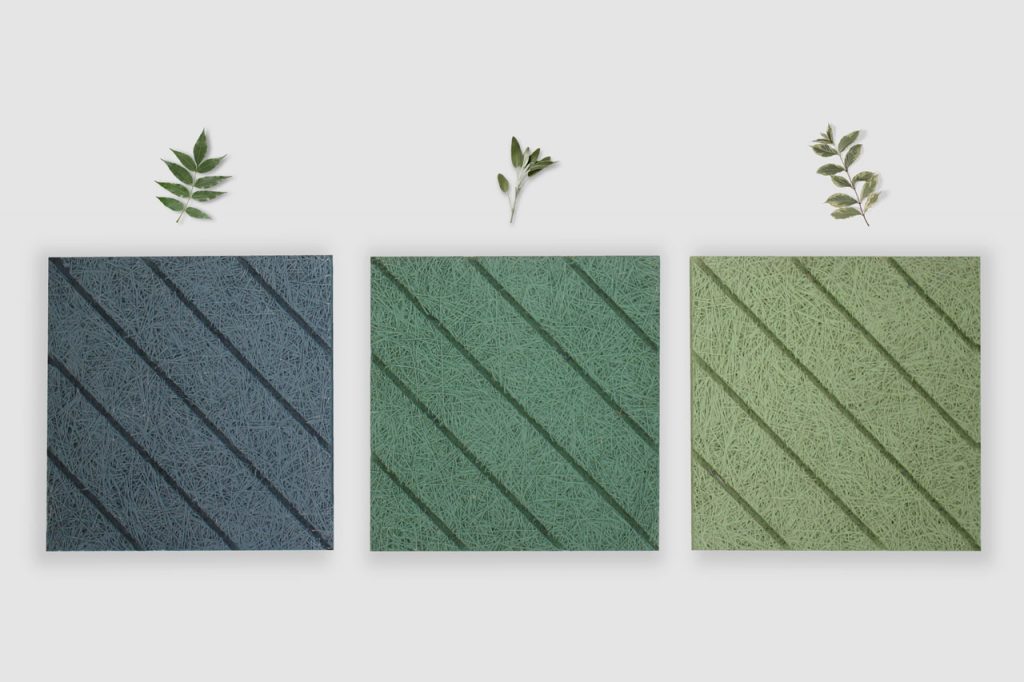
Optimising Thermal Insulation in Passive Houses
Superior Insulation Properties
Wood wool panels are integral to passive house design due to their exceptional thermal insulation properties. Passive houses aim to minimize energy consumption by maintaining a consistent indoor temperature with minimal heating and cooling requirements¹. Wood wool panels contribute to this goal by effectively reducing heat transfer, ensuring that the building remains energy-efficient and comfortable throughout the year².
Energy Efficiency
The use of wood wool panels in passive houses significantly enhances energy efficiency. These panels help maintain indoor temperatures by providing a stable thermal barrier, which reduces the need for artificial heating and cooling systems³. This energy-saving capability aligns with the core principles of passive house design, which emphasizes reducing the overall energy demand of buildings⁴.

Acoustic Benefits of Wood Wool Panels
Noise Reduction
In addition to their thermal properties, wood wool panels offer excellent acoustic performance. The porous structure of these panels absorbs sound, making them ideal for passive houses, which prioritize comfort and tranquility. Effective noise reduction is essential in residential settings, contributing to a more peaceful and enjoyable living environment⁵.
Enhancing Indoor Comfort
The acoustic benefits of wood wool panels extend beyond noise reduction. By improving the overall sound quality within the home, these panels enhance the indoor comfort of passive houses. This makes them particularly suitable for urban environments where external noise can be a significant issue⁶.

Environmental and Health Advantages
Eco-Friendly Material Composition
Wood wool panels are made from natural and renewable resources, including wood fibres and cement. This eco-friendly composition makes them a sustainable choice for passive house construction. The production process of wood wool panels is energy-efficient and generates minimal waste, further reducing their environmental impact⁷. By using these panels, builders and homeowners can contribute to a more sustainable construction industry.
Improving Indoor Air Quality
Wood wool panels are known for their low emission of volatile organic compounds (VOCs). This characteristic is crucial for maintaining high indoor air quality, a key requirement in passive house design. Low VOC emissions ensure that the indoor environment remains healthy and free from harmful pollutants, benefiting the occupants’ health and well-being⁸.
Applications in Passive House Construction
Interior and Exterior Use Wood wool panels are versatile and can be used in various applications within passive house construction. They are suitable for both interior and exterior use, providing thermal insulation and acoustic benefits in walls, ceilings, and facades⁹. Their adaptability makes them an excellent choice for different building designs and styles.
Durability and Longevity The durability of wood wool panels ensures that they can withstand the test of time, making them a cost-effective solution for passive houses. Their resistance to moisture and pests adds to their longevity, reducing the need for frequent replacements and maintenance¹⁰. This durability aligns with the passive house principle of creating long-lasting, energy-efficient buildings.
Future Trends and Innovations
Integration with Smart Building Systems
The integration of wood wool panels with smart building systems represents a future trend in passive house design. These systems use advanced technologies to monitor and optimize indoor environmental conditions, enhancing the performance of wood wool panels¹¹. The synergy between sustainable materials and smart technologies will continue to drive innovations in passive house construction.
Advancements in Panel Technology
Ongoing research and development in wood wool panel technology are expected to yield improvements in performance characteristics such as moisture resistance, thermal insulation, and acoustic properties¹². These advancements will further solidify the role of wood wool panels in the future of passive house design, ensuring they meet the highest standards of sustainability and efficiency.

References
- Feist, W. (2015, April 30). Passive House Principles. Passive House Institute.
- Yates, A. (2001). Sustainable Building: The Environmental Performance of Buildings. BRE Press.
- Everest, F. A. (2001). Master Handbook of Acoustics. McGraw-Hill Education.
- U.S. Department of Energy. (2020, August 10). Energy Efficiency and Passive House Design. U.S. Department of Energy.
- Acoustical Society of America. (2021, January 5). Acoustic Benefits of Building Materials. Acoustical Society of America.
- Harris, C. M. (2006). Noise Control in Buildings: A Guide for Architects and Engineers. McGraw-Hill Education.
- Forest Stewardship Council. (2019, April 12). The Importance of Sustainable Forest Management. FSC International.
- U.S. Environmental Protection Agency. (2021, June 15). Improving Indoor Air Quality. U.S. Environmental Protection Agency.
- Architectural Digest. (2019, October 15). Design Flexibility with Wood Wool Panels. Architectural Digest.
- Building Research Establishment. (2018). Durability and Performance of Building Materials. BRE.
- Smith, P. F., & Green, M. (2017, February 10). Smart Building Systems and Passive House Integration. Elsevier.
- Material Innovations Institute. (2023, April 18). Advances in Wood Wool Panel Technology. Material Innovations Institute.
Share